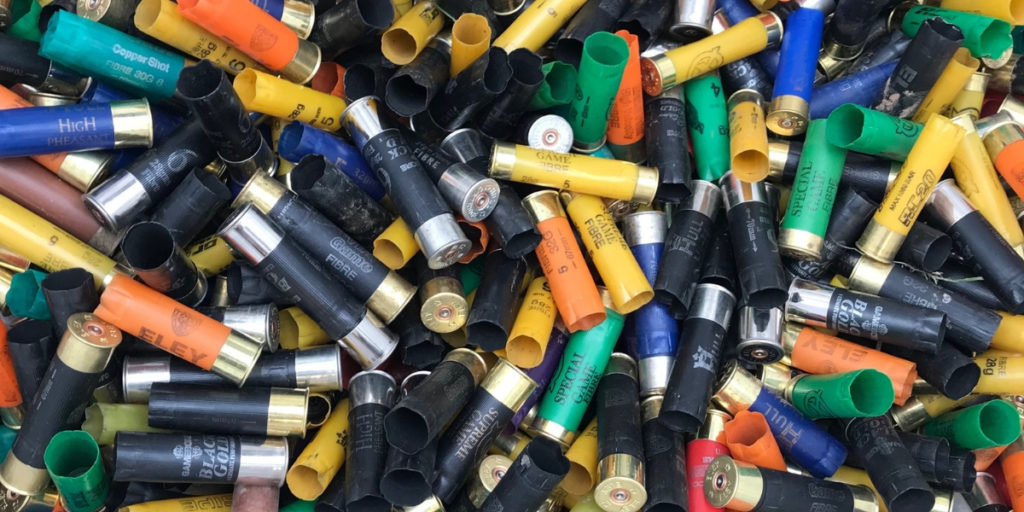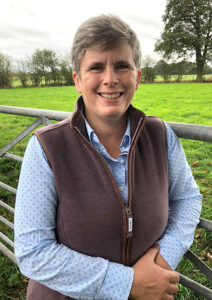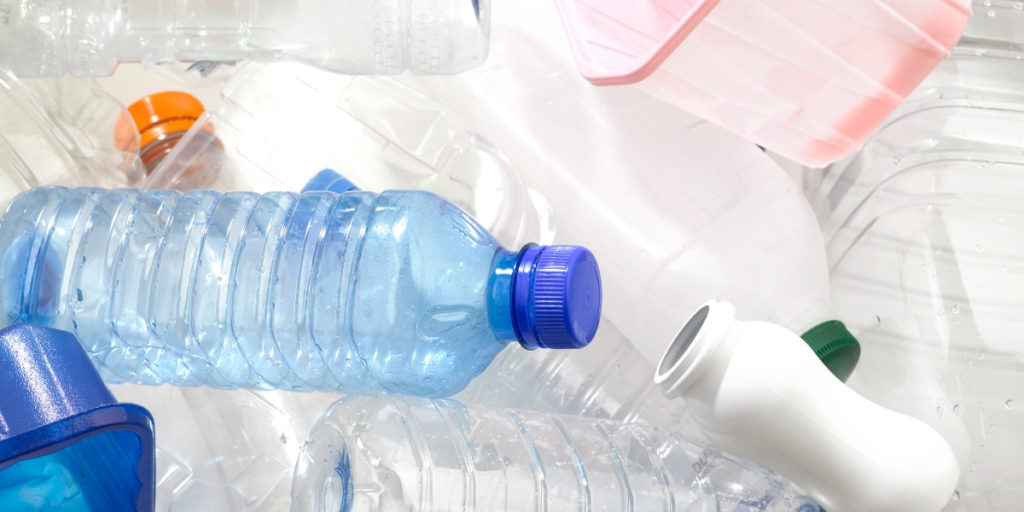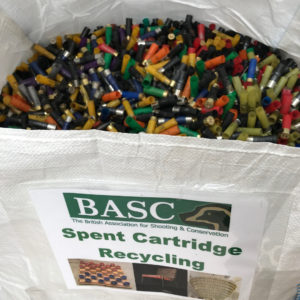[et_pb_section bb_built=”1″ fullwidth=”off” specialty=”off”][et_pb_row _builder_version=”3.12.1″ custom_margin=”0px|||” custom_padding=”0px|||” background_position=”top_left” background_repeat=”repeat” background_size=”initial”][et_pb_column type=”3_4″][et_pb_post_title _builder_version=”3.17.6″ comments=”off” featured_image=”off” title=”off” /][et_pb_text _builder_version=”3.17.6″]

This blog by BASC executive director of conservation Caroline Bedell was first published on Mark Avery’s website to highlight the use of plastics in shooting and BASC’s long-term plan to encourage everyone involved in shooting to recycle.
[/et_pb_text][et_pb_text _builder_version=”3.17.6″]
It probably proves how ubiquitous plastic has now become in our lives that few people choose anything else for their shotgun cartridges.
Plastic cartridges may have become the norm, but they are not ‘traditional’, as Mark said in his blog, if you consider the entire history of shooting. In the very early days, cases were brass. And for the first half of the 20th Century, paper cartridges were the only widely-available option for the majority.
 The arrival of plastic in wider society had a pretty dramatic impact. The shooting community quickly abandoned paper cartridges which, although coated in wax, could still swell if wet; with the UK’s weather, that was a real and obvious problem!
The arrival of plastic in wider society had a pretty dramatic impact. The shooting community quickly abandoned paper cartridges which, although coated in wax, could still swell if wet; with the UK’s weather, that was a real and obvious problem!
Non-lead ammunition, such as steel, has always been produced in plastic cases and with plastic wads (the inner workings of the cartridge that ‘cups’ the shot as it travels along the barrel). Steel, being harder than lead, has the potential to damage guns more easily and so the shot is held in the plastic cup to avoid the charge touching the barrels.
Plastic cases were eventually adopted over paper by manufacturers because the material is strong, cheap, lightweight, and easy to use. Margins for cartridge manufacturers are tight and so, like almost every other business in the world, if effective and cheaper alternatives become available, manufacturers will use them.
[/et_pb_text][et_pb_text admin_label=”poem” _builder_version=”3.17.6″ custom_css_main_element=”Ul {list-style-type: none;}”]
Few could have foreseen the current public clamour to consider the long-term impact of single-use plastics on our environment. And whether you support shooting or not, the challenges facing us now are little different to the issues challenging other sectors across the globe. The world has finally woken up to the potential adverse impact of plastics.
[/et_pb_text][et_pb_text _builder_version=”3.17.6″]
We should accept there are massive changes afoot in shooting and all of us should take personal responsibility to do our bit to influence positive change. Since Blue Planet II and the thought-provoking footage of the albatross parents feeding chicks bits of plastic, BASC members have been asking about the alternatives and what they can do to help.
Most shoots already insist on fibre wads, so that plastic is not left in the environment, and most game ‘Guns’ will use them as a matter of course.
Manufacturers are responding to the changes in demand. Eley, for example, produce some of their cartridge range in paper cases with fibre wads.
Guns are encouraged to collect their cartridge cases from the field and compliance rates are pretty comprehensive. Plastic wads are less easily dealt with and manufacturers are striving to develop and market effective alternatives.

The message from Blue Planet II that plastic is bad and is damaging our planet is simple and powerful, but as with many other areas of life, implementing change isn’t quite as straight-forward. In the rush to move away from plastics, do we risk doing more harm than good?
Think of supermarket bags. Single-use plastic bags were banned and a minimum charge was introduced for all bags, but the problem is that a “Bag for Life” isn’t quite that. Most people will use it about as many times as the thinner single-use bags.
A Bag for Life is thicker and so requires much more carbon to produce. To have the same impact on CO2 emissions as a single-use plastic bag you would need to reuse it around nine times.
And it gets worse. If you buy a cotton bag you would need to reuse it 400 times to get the same per-use carbon emissions as the humble single-use bag. So, we save the albatross but instead contribute to CO2 emissions and climate change?
BASC are working with partners in industry to find sustainable ways of using plastic and alternatives that don’t mortgage our  tomorrows for a simple solution today. Therefore, it is important that manufacturers are given time to adapt to truly sustainable alternatives.
tomorrows for a simple solution today. Therefore, it is important that manufacturers are given time to adapt to truly sustainable alternatives.
While those alternatives are developed, those who shoot can recycle cartridges and many are choosing to do so.
Companies like Agri-Cycle specialise in recycling cartridges and reusing the plastic and metal components. BASC is working with them to encourage shoots to collect cartridges to be recycled. Some cartridge suppliers are also offering recycling services.
BASC is actively raising awareness of recycling opportunities and encouraging networks to be developed where they do not currently exist. There will likely be a cost to this for the end user, but we pay it now without quibbling for bags at the check-out.
Those who shoot are taking this issue seriously and want to be in a better position to make informed choices on plastic, whether it’s a bag or a cartridge.
[/et_pb_text][et_pb_cta _builder_version=”3.17.6″ button_text=”Click here ” button_url=”https://0ld.basc.org.uk/conservation/” url_new_window=”on” title=”Find out more about conservation” text_orientation=”left” header_font_size=”30″ background_image=”https://0ld.basc.org.uk/wp-content/uploads/2019/02/shutterstock_307943279.jpg” background_position=”top_center” custom_button=”on” button_bg_color=”#078463″ button_border_color=”#ffffff” button_use_icon=”off” button_text_color=”#ffffff” header_font_size_tablet=”24″ header_font_size_phone=”20″ header_font_size_last_edited=”on|phone” button_border_width=”1″ custom_css_promo_button=”margin-top:10px !important;” button_text_size__hover_enabled=”off” button_text_size__hover=”null” button_one_text_size__hover_enabled=”off” button_one_text_size__hover=”null” button_two_text_size__hover_enabled=”off” button_two_text_size__hover=”null” button_text_color__hover_enabled=”on” button_text_color__hover=”#90bba8″ button_one_text_color__hover_enabled=”off” button_one_text_color__hover=”null” button_two_text_color__hover_enabled=”off” button_two_text_color__hover=”null” button_border_width__hover_enabled=”off” button_border_width__hover=”null” button_one_border_width__hover_enabled=”off” button_one_border_width__hover=”null” button_two_border_width__hover_enabled=”off” button_two_border_width__hover=”null” button_border_color__hover_enabled=”off” button_border_color__hover=”null” button_one_border_color__hover_enabled=”off” button_one_border_color__hover=”null” button_two_border_color__hover_enabled=”off” button_two_border_color__hover=”null” button_border_radius__hover_enabled=”off” button_border_radius__hover=”null” button_one_border_radius__hover_enabled=”off” button_one_border_radius__hover=”null” button_two_border_radius__hover_enabled=”off” button_two_border_radius__hover=”null” button_letter_spacing__hover_enabled=”off” button_letter_spacing__hover=”null” button_one_letter_spacing__hover_enabled=”off” button_one_letter_spacing__hover=”null” button_two_letter_spacing__hover_enabled=”off” button_two_letter_spacing__hover=”null” button_bg_color__hover_enabled=”off” button_bg_color__hover=”null” button_one_bg_color__hover_enabled=”off” button_one_bg_color__hover=”null” button_two_bg_color__hover_enabled=”off” button_two_bg_color__hover=”null” /][/et_pb_column][et_pb_column type=”1_4″][/et_pb_column][/et_pb_row][/et_pb_section]
